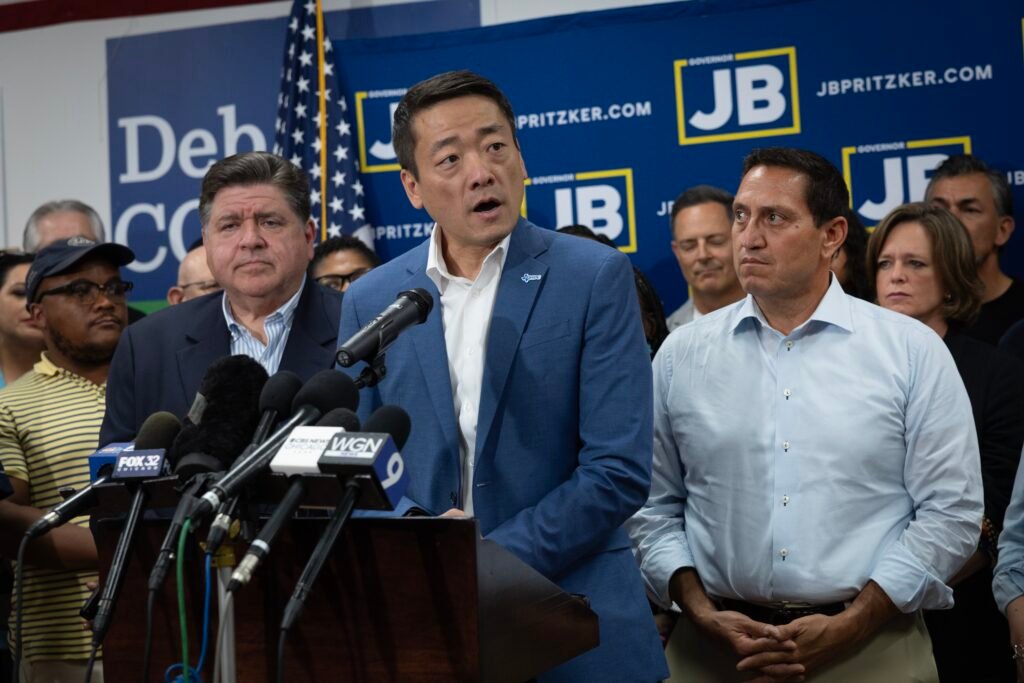Washington – President Donald Trump aims to bolster the slim GOP majority in the upcoming 2026 midterm elections. Recently, the contentious issue of redistricting in Texas has escalated, drawing in other states as well.
Texas Democrats have fled the state in a bid to obstruct a new Congressional map, igniting lawsuits and prompting Congress members to advocate for legislation to control the ongoing redistricting conflict.
So far, Texas is the only state actively pursuing changes to its Congressional lines, but it seems likely that a broader scramble could be on the horizon.
Here’s a closer look at the developing redistricting scenario:
What sparked the push for district changes?
In 2026, Texas Republicans created a new Congressional map, which could secure five additional seats for the GOP. Generally, the party in the White House tends to lose seats during midterm elections.
Currently, the House is composed of 219 Republicans, 212 Democrats, and four empty seats, making for a precarious GOP majority. This tight majority poses significant hurdles for Louisiana Republican House Speaker Mike Johnson, as he tries to push forward Trump’s agenda while managing varying factions within the GOP.
Typically, Congressional districts are redrawn following the decennial census, but the recent changes in Texas stand out as particularly sharp and contentious.
What’s happening in Texas?
Texas Republicans unveiled a Congressional map late last month with the intent to reshape major urban areas currently held by Democrats.
The Justice Department informed Texas leaders that four of the proposed districts might infringe upon constitutional guidelines, prompting a wave of Texas Democrats to depart the state to stall Congress from adopting the contested map.
This situation has incited ire from Governor Greg Abbott, who has announced plans to sue for the removal of Texas House Democratic Caucus Chairman Gene Wu after his departure alongside other Democrats.
Texas Attorney General Ken Paxton indicated that he would pursue a court order declaring House seats vacant for those Democrats who remain absent by a specified deadline.
In a turn of events, Texas GOP Senator John Cornyn called on the FBI to take appropriate measures against the fleeing lawmakers when questioned about the agency’s involvement.
California’s response
California Governor Gavin Newsom has been particularly vocal about retaliating against Texas Republicans by considering redistricting in California ahead of the 2026 elections.
In California and some other Democratic states, the re-zoning process is typically more stringent than in Texas. While some Democratic groups praise California’s nonpartisan redistricting committee, Newsom has suggested temporarily setting this aside in the face of Texas’s actions.
At a recent conference, Newsom criticized the Trump administration’s tactics as undemocratic, accusing them of changing the rules of the game when they can’t win under them.
Are other states considering rezoning?
Vice President JD Vance is set to visit Indiana soon to advocate for redistricting initiatives. Indiana’s GOP Governor Mike Brown has stated that no official plans have yet been made in response to the situation in Texas.
Alongside California, several other Democratic leaders are also contemplating redistricting measures in light of Texas’s actions.
New York Governor Kathy Hochul recently remarked that the approach taken by Texas is politically damaging and essentially constitutes “political arson.”
In Illinois, Governor J.B. Pritzker hinted that the state might explore rezoning, while other Democratic governors voiced agreement on the need for midterm constituency reviews in response to Texas.
Even some Republican states, like Missouri, are discussing the potential for new district lines under pressure from Trump.
What are the risks?
The scramble to adjust Congressional boundaries may prove costly and complicate the redistricting process further.
A nonpartisan group, Common Cause, has urged Democrats not to retaliate, suggesting that the push for redistricting could lead to further destabilization of elections nationwide.
Emily Ebby French, a Texas policy director at Common Cause, emphasized that both parties need to refrain from manipulating district boundaries for partisan advantage, advocating for fair elections instead.
Is this driven by party leadership?
Trump’s remarks appear to suggest he is urging Texas Republicans to enhance their position. He stated in a recent interview that the GOP has a rightful claim to additional seats.
DNC Chair Ken Martin addressed the matter in Illinois, stating that parties should focus on winning votes rather than trying to alter districts for electoral gain.
Still, he noted that Democrats should not shy away from countering Texas Republicans’ strategies.
What is Congress doing?
At least two GOP House members from traditionally blue states are pushing for legislation against any retaliatory redistricting efforts, aiming to curb these initiatives at the federal level.
Representative Kevin Kiley has introduced a bill to ban midterm redistricting, condemning the actions of his Democratic counterparts. He argued that such moves undermine voter intention and chaos within congressional structures.
Additionally, Representative Mike Lawler is working on a proposal against partisan gerrymandering intended to prevent any further escalation of the redistricting battle.







